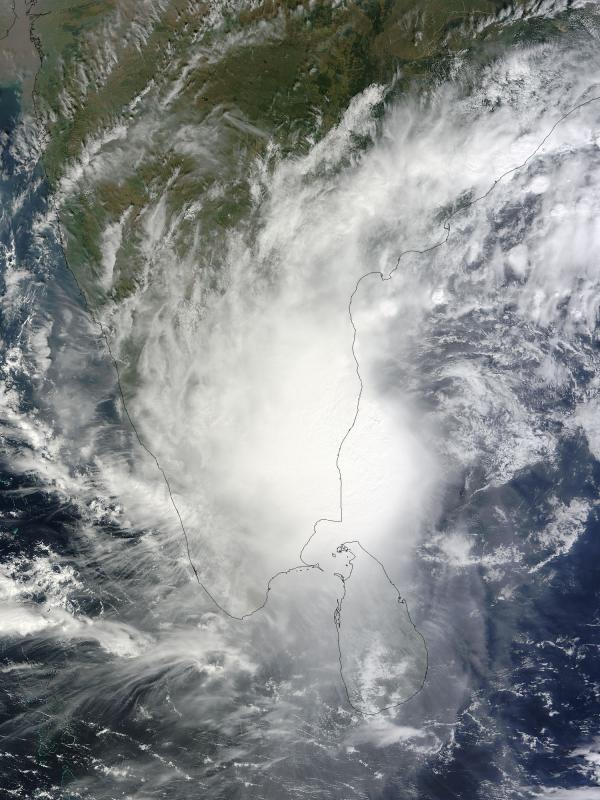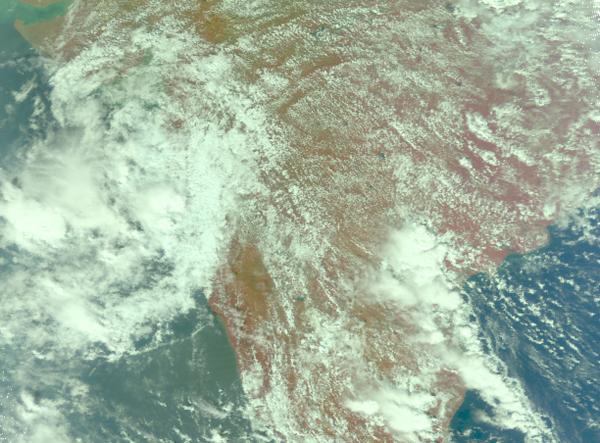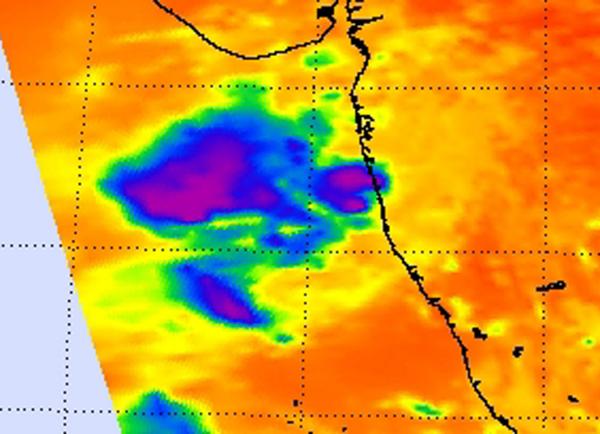Jal's Remnants in the Arabian Sea May Pick Up Speed


The leftovers of what was Tropical Cyclone Jal may not be ready to die just yet.
The low pressure area formerly known as Topical Cyclone Jal (tropical cyclone is the generic name for tropical storms, typhoons and hurricanes) has emerged into the warm waters of the Arabian Sea after crossing India this past weekend, as seen by infrared and visible imagery from NASA's Aqua satellite today (Nov. 9) at 1:30 p.m. local time in India.
Today's imagery hints that Jal's remnants are still circulating. The circulation was particularly apparent in the visible image and the infrared satellite image showed that the strongest convection and thunderstorms are now occurring to the west of the center of circulation and over the open waters of the Arabian Sea.
At 900 GMT (4 a.m. EST) on Nov. 9, the remnants of Tropical Cyclone Jal were over the waters of the eastern Arabian Sea. The Arabian Sea is located in the northwestern part of the Indian Ocean and covers a total area of about 1,491,000 square miles (3,862,000 square kilometers).
Relative to land and the nearest city in India, Jal's remnant low was about 70 miles (113 kilometers) east-southeast of Mumbai. Mumbai is the capital of the Indian state of Maharashtra and is located on India's west coast. It is the most populous city in India with 14 million residents.
The forecasters at the Joint Typhoon Warning Center at the Naval Maritime Forecast Center in Pearl Harbor, Hawaii are monitoring Jal's remnants for possible regeneration later today.
- What U.S. Cities are Most Vulnerable to Hurricanes?
- Surprisingly, Hurricanes Avoid U.S. Landfall in 2010
- How Do Cyclones, Hurricanes and Typhoons Differ?
Get the world’s most fascinating discoveries delivered straight to your inbox.





